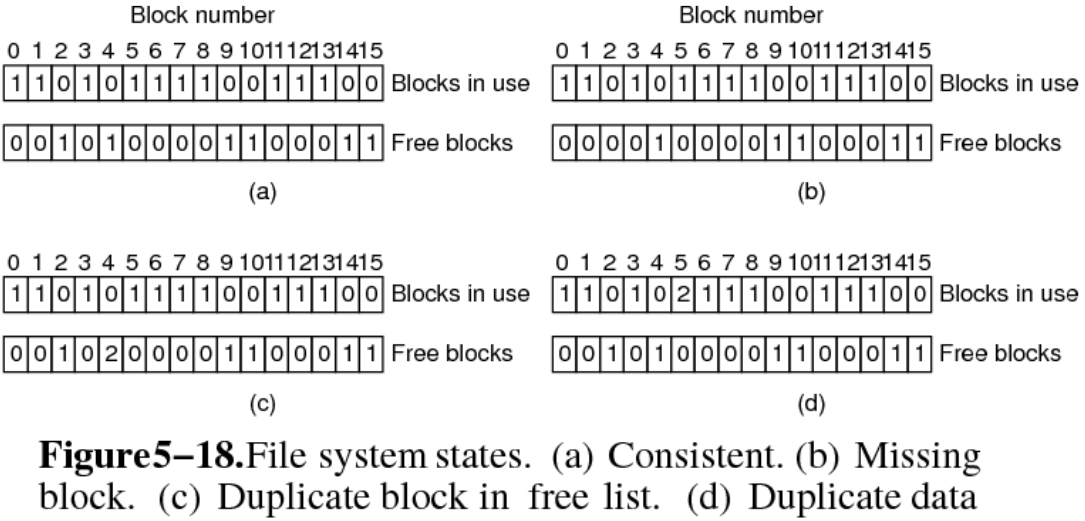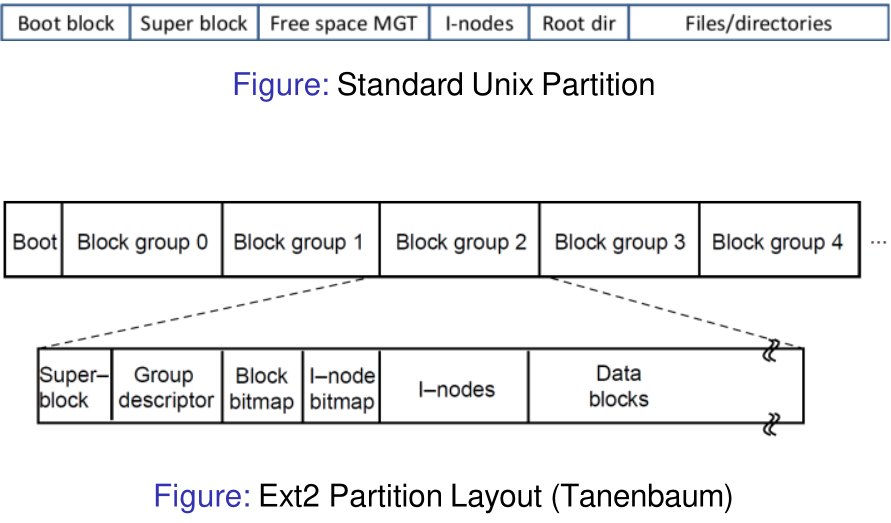22. File System Recovery & Defag
05/12/22
File System Consistency
Checking Consistency
- Journaling heavily reduces the probability of having inconsistencies in a file system. The log stores what operations were not run.
- However, it can still be possible to get some inconsistencies (data blocks weren't flushed to the drive)
- Can be problematic, especially for structural blocks such as i-nodes, directories and free lists
- System utilities are available to restore file systems
- Two main consistency checks; blocks and directory
Block Consistency
- Checks whether blocks are assigned/used the correct way
- Block consistency is checked by building two tables:
- How often a block is present in a file (based on the i-nodes)
- Counts how often a block is present in the free list
- Consistent file system has a 1 in either of the tables for each block
- Typically, this is a very slow process, can take hours

Restore Block Consistency
- A missing block - does not exist in any of the tables -> add it to the free list
- A block is double counted in the free list ("disaster" waiting to happen) -> re-build the free list
- A block is present in two or more files
- Removing one file results in the adding the block to the free list
- Remove both files will result in a double entry in the free list
- Solution: use new free block and copy the content (file is still likely to be damaged 😞)
FSCK Algorith:
1. Iterate through all the i-nodes
- retrieve the blocks
- increment the counters
2. Iterate through the free list
- incremenet counters for free blocks
Restore I-node consistency
- Checking the directory system
- I-node counter is higher than the number of directories containing the file
- Removing the file will reduce the i-node counter by 1
- Since the counter will remain larger than 1, the i-node/disk space will not be released to future use
- I-node counter is less than the number of directories containing the file
- Removing the file will (eventually) set the i-node counter to 0 whilst the file is still referenced
- The file/i-node will be released, even though the file was still in use
- Recurse through the directory hierarchy
- Check file specific counters
- I.e. each file is associated with one counter
- One file may appear in multiple directories
- Compare the file counters and i-node counters
- Correct if necessary
File System Defragmentation
- At the start all free disk space is in a single contiguous unit
- Creating and removing files, a disk may end up badly fragmented
- Defrag utilities make file blocks contiguous (very slow operation), and free space in one or more large contiguous regions on the disk
- Defragmentating SSD is counter-productive
Linux File System
- Minix File System - Max: 64MB, file names limited to 14 char
- Extended File System (extfs) - file names were 255 char, max file size 2GB
- ext2 - larger files, names, better performance
- ext3-4 - journaling

Directory Entries
- Superblock contains file system information
- Group descriptor contains bitmap locations, number of free blocks, i-nodes and directories
- Data block bitmap and i-node bitmap, used to keep track of free disk blocks and i-nodes
- Table of i-nodes containing file and disk block information
- Data blocks containing file and directory blocks
EXT2
- Partition is split into several block groups
- Reduce fragmentation by storing i-nodes and files, and parent directories and files in the same block group is possible
- Reduce seek time and improve performance
- All groups have the same size and are stored sequentially